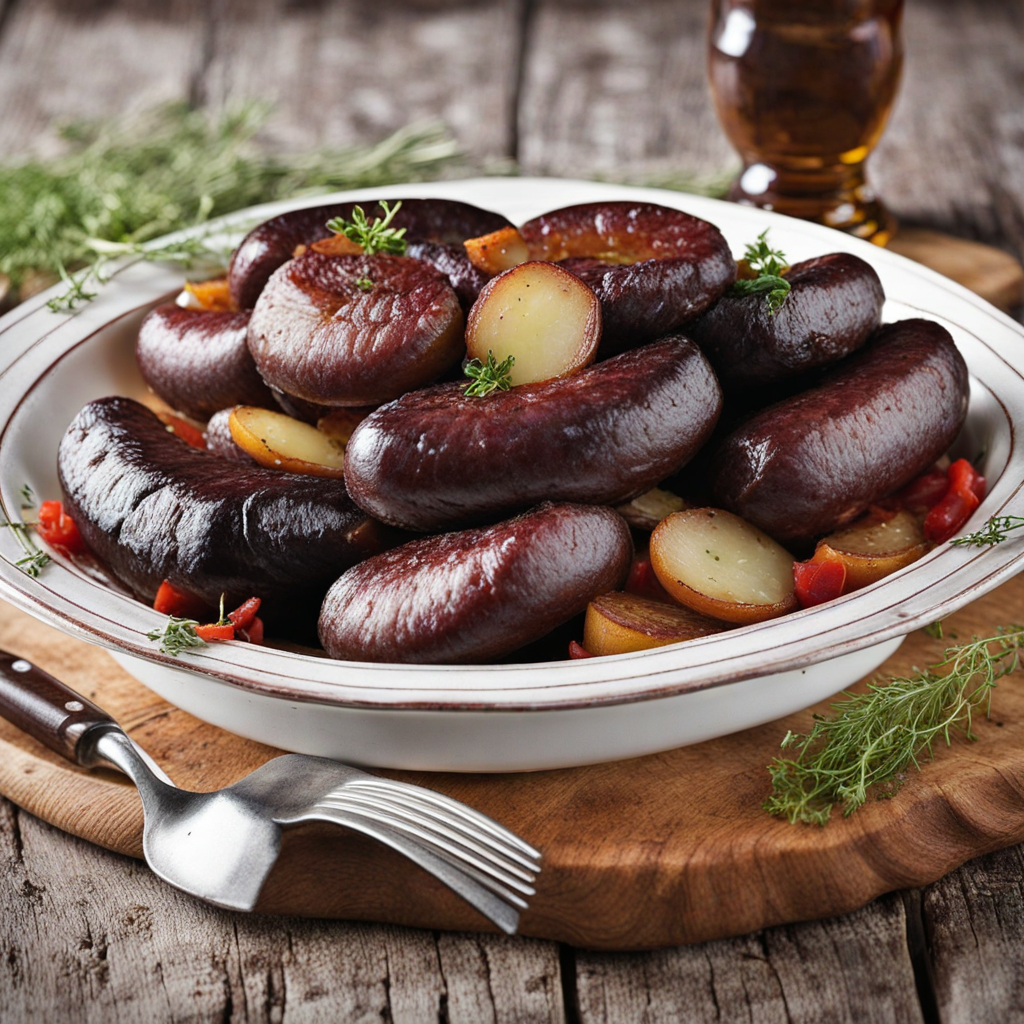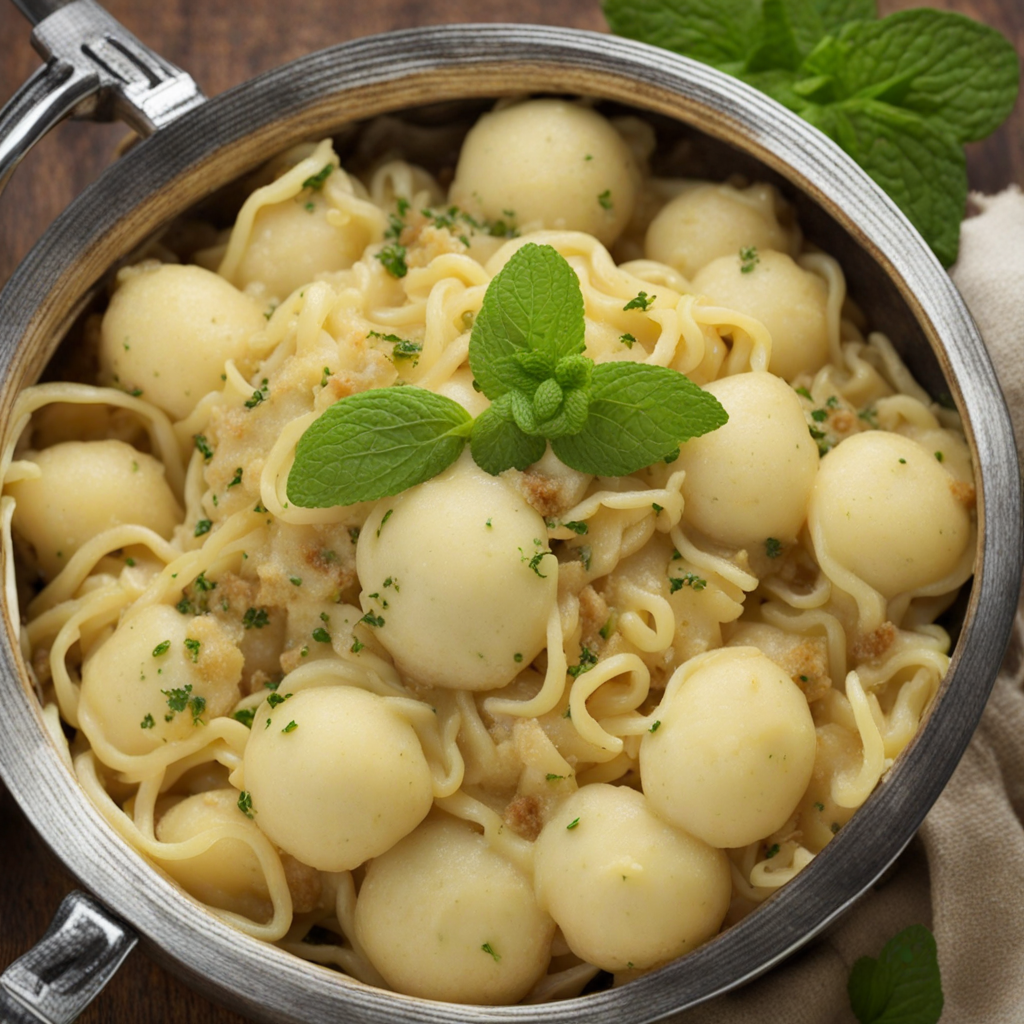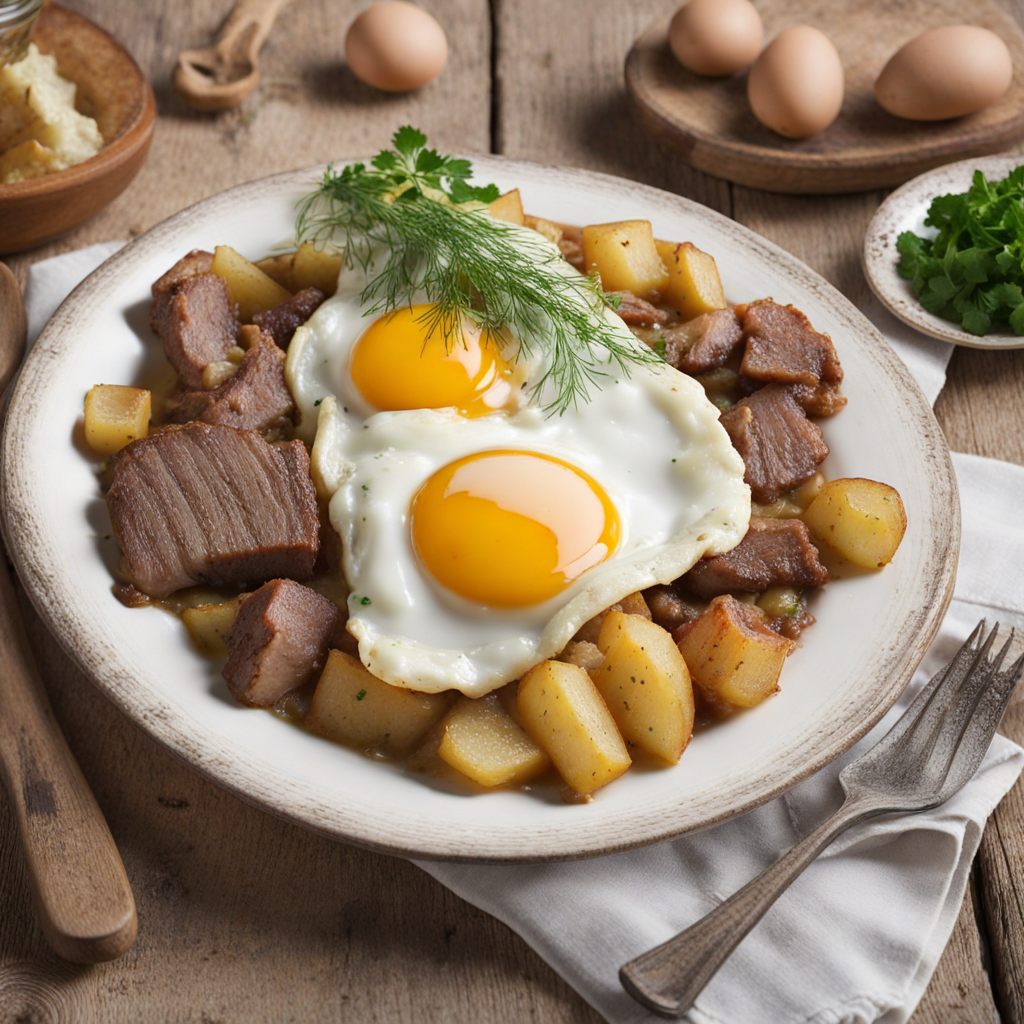Blunzengröstl
Blunzengröstl is a hearty and comforting dish originating from Austria, showcasing the rich flavors of traditional Austrian cuisine. This delightful meal is primarily made with blood sausage, known as "Blunzn," which is a staple ingredient in many regional dishes. The blood sausage is typically sliced and sautéed until it develops a crispy exterior, adding a satisfying texture to the dish. The combination of the savory sausage with the earthy flavors of caramelized onions creates a robust and aromatic base that is simply irresistible. The dish is often accompanied by potatoes, which are pan-fried until golden brown, enhancing the overall experience with their crispy edges and fluffy centers. To elevate the flavors even further, Blunzengröstl is usually seasoned with fresh herbs, such as parsley or chives, which add a refreshing brightness to the rich ingredients. The dish often features a touch of sweetness from sautéed onions, balancing the earthiness of the blood sausage. Some variations might include additional vegetables, like bell peppers or carrots, which contribute their own unique textures and flavors, making each bite a delightful discovery. Served hot, Blunzengröstl is typically presented in a rustic manner, showcasing its simplicity and heartiness. It is often enjoyed as a main course, especially during colder months when warming, substantial food is most appreciated. Paired with a crisp salad or a dollop of apple sauce, this dish offers a wonderful contrast of flavors and textures, making it an excellent choice for those looking to explore authentic Austrian cuisine. Whether enjoyed in a cozy mountain hut or a charming local eatery, Blunzengröstl is sure to leave a lasting impression on anyone seeking to expand their culinary horizons.
How It Became This Dish
Blunzengröstl: A Culinary Journey through Austria’s Heartland Blunzengröstl, a beloved dish hailing from the alpine regions of Austria, is a rustic yet flavorful concoction that exemplifies the country's culinary traditions. This dish is a hearty blend of leftover blood sausage—known as "Blunzen" in local dialect—potatoes, onions, and various spices, all fried together to create a satisfying meal. To understand the cultural significance and historical evolution of Blunzengröstl, we must delve into Austria's rich tapestry of culinary heritage. Origins of Blunzengröstl The roots of Blunzengröstl can be traced back to Austria's agrarian past, where resourcefulness and frugality were essential for survival. The tradition of using blood sausage, a staple in many European cuisines, emerged as a means to utilize every part of the animal during butchering. In Austria, particularly in regions such as Styria, the preparation of blood sausage is an age-old practice, often made from pork blood, fat, and various spices, encased in intestines. The name Blunzengröstl itself gives clues to its components: "Blunzen" refers to the blood sausage, while "Gröstl" denotes a style of frying that typically includes potatoes and meat. The practice of frying leftover ingredients into a cohesive dish is a common theme in many cultures, reflecting a culinary philosophy centered on minimizing waste and maximizing flavor. Cultural Significance Blunzengröstl is more than just a dish; it is a representation of Austria's rural roots and culinary ingenuity. In the past, when food scarcity was a concern, families would often prepare meals from what they had on hand. The dish embodies the spirit of "Nose to Tail" cooking—using all parts of the animal, ensuring that nothing goes to waste. This ethos resonates particularly in Austria, where the relationship with the land and its resources is deeply ingrained in the culture. In Austria, blood sausage, or "Blunzen," is often associated with regional festivities and traditional markets, particularly during the colder months when hearty dishes are favored. Blunzengröstl is often served as a comforting meal during family gatherings, celebrations, or even as a late-night snack after a long day of winter sports in the picturesque Austrian Alps. Its warmth and richness provide not only sustenance but also a sense of nostalgia and connection to home. Evolution Over Time As Austria's culinary landscape has evolved, so too has Blunzengröstl. While the core components of the dish remain largely unchanged, contemporary interpretations have emerged, reflecting broader culinary trends and innovations. In the early 20th century, as urbanization began to transform Austrian society, traditional dishes like Blunzengröstl started appearing in restaurants and cafes, often as a nod to nostalgia for rural life. The post-World War II era marked a significant turning point for Austrian cuisine, as the nation sought to redefine itself in the wake of conflict. During this period, there was a renewed interest in traditional foods, and Blunzengröstl experienced a renaissance. Chefs began to experiment with the dish, incorporating modern cooking techniques while still honoring the traditional preparation methods. Today, Blunzengröstl can be found on menus in both rustic taverns and upscale restaurants across Austria, often garnished with fresh herbs or served with a tangy apple sauce or a dollop of sour cream. The dish has also crossed borders, gaining popularity in neighboring countries, where it has been adapted to local tastes. Modern Interpretations and Global Reach In recent years, the global interest in artisanal and locally sourced foods has led to a revival of traditional dishes like Blunzengröstl. With the rise of the farm-to-table movement, many chefs are returning to their roots, sourcing high-quality ingredients and prioritizing sustainability. This trend has influenced the way Blunzengröstl is prepared and served, with an emphasis on using organic potatoes, locally made blood sausage, and seasonal vegetables. Moreover, as culinary tourism flourishes, visitors to Austria are increasingly seeking authentic experiences that connect them to the culture and traditions of the region. As a result, cooking classes, food tours, and culinary festivals featuring traditional Austrian dishes, including Blunzengröstl, have proliferated. This has not only introduced the dish to a broader audience but has also fostered an appreciation for the stories and techniques behind it. Conclusion Blunzengröstl stands as a testament to Austria's rich culinary heritage, encapsulating the values of resourcefulness, tradition, and community. Its evolution from a humble peasant dish to a celebrated culinary staple reflects broader changes in Austrian society and its food culture. As it continues to adapt to contemporary tastes while retaining its traditional roots, Blunzengröstl remains a cherished symbol of comfort, nostalgia, and the enduring connection between food and identity. In a world that increasingly values sustainability and heritage, Blunzengröstl serves as a delicious reminder of the importance of honoring the past while embracing the future. Whether enjoyed in a cozy alpine hut or a trendy urban café, this dish invites diners to savor not just its flavors, but the rich history and culture that it represents.
You may like
Discover local flavors from Austria







